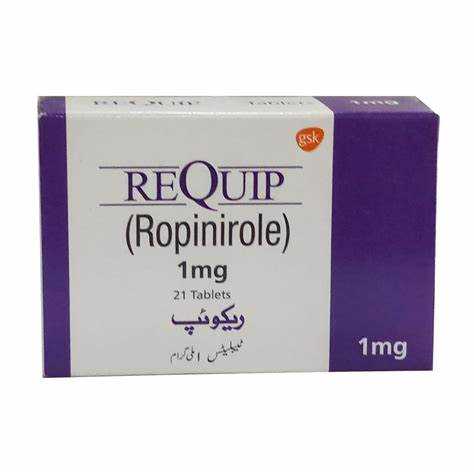

In the realm of medical advancements, certain therapies have emerged as pivotal in addressing complex neurological and movement-related conditions. These groundbreaking solutions have shown remarkable promise in enhancing the quality of life for individuals affected by these ailments. The following discussion delves into one such prominent option that has gained recognition for its substantial benefits in mitigating symptoms and improving patient outcomes.
Understanding the intricacies of neurological conditions requires a comprehensive exploration of the therapeutic mechanisms that offer relief and stability. This narrative provides an insightful overview of a well-regarded pharmacological innovation, which has demonstrated significant efficacy in reducing discomfort and promoting better health. By examining the science behind this therapeutic marvel, we uncover how it helps patients regain control and live more comfortably.
As we delve deeper, we will explore the specific attributes that make this pharmaceutical solution a preferred choice among healthcare providers. Its unique formulation and mode of action contribute to its wide acceptance in clinical practice. By shedding light on patient experiences and clinical trials, this article aims to present a thorough understanding of how this treatment has revolutionized care for those suffering from these challenging conditions.
How This Medication Alleviates Symptoms
This section delves into how this medication can significantly improve the quality of life for individuals experiencing certain neurological conditions. By addressing the underlying mechanisms, the medication helps to reduce discomfort and enhance daily functioning.
Mitigating Neurological Discomfort
The medication works by targeting specific pathways in the brain, thereby reducing involuntary movements and promoting smoother muscle control. This leads to a notable decrease in the intensity of symptoms, allowing patients to regain a sense of normalcy in their lives. Through regular use, individuals often experience a marked improvement in their ability to perform everyday tasks without interruption.
Enhancing Motor Function
One of the primary ways this medication aids users is by enhancing motor function. By binding to certain receptors, it helps to stabilize neurotransmitter levels, resulting in improved coordination and muscle control. Patients frequently report a significant reduction in tremors and other involuntary movements, which contributes to a better quality of life. This therapeutic approach not only alleviates physical symptoms but also positively impacts mental well-being, as patients feel more in control of their bodies.
Overall, the medication’s ability to address both the physical and psychological aspects of these conditions makes it a valuable option for those seeking relief from chronic discomfort. By improving movement and reducing pain, it empowers patients to lead more active and fulfilling lives.
Understanding the Mechanism of Requip
The purpose of this section is to delve into the underlying biological processes and actions of this medication. By exploring the way it interacts with the brain and nervous system, we can gain a clearer picture of how it manages to alleviate symptoms associated with certain neurological conditions.
The Pharmacological Action
This medication primarily works by mimicking the activity of dopamine, a crucial neurotransmitter in the brain. It binds to dopamine receptors, effectively stimulating them in a manner similar to the natural chemical. This action helps to correct the dopamine deficiency often seen in patients, leading to improved motor function and reduced symptoms.
Impact on the Nervous System
Once administered, the drug is absorbed into the bloodstream and transported to the brain, where it crosses the blood-brain barrier. By engaging with specific neural pathways, it helps to balance the signals that control movement and muscle activity. This mechanism is essential for reducing the involuntary movements and discomfort associated with the conditions it is prescribed for.
Neurotransmitter Balance: One of the key roles of this medication is to restore the equilibrium of neurotransmitters. By doing so, it not only addresses the primary symptoms but also contributes to the overall stabilization of the patient’s neurological health.
In summary, understanding the way this drug functions at a molecular level provides valuable insights into its effectiveness in managing complex neurological disorders. Through its targeted action on dopamine receptors and its ability to modulate neural activity, it stands out as a significant advancement in therapeutic strategies.
Managing the Challenges of Motor and Sleep Disorders
Living with neurological conditions brings about a unique set of challenges, encompassing both motor and sleep disturbances. This section delves into strategies for addressing these intricacies, offering insights into alleviating symptoms and improving overall quality of life.
Addressing Motor Disruptions:
Individuals grappling with motor difficulties encounter a myriad of obstacles, from involuntary movements to muscle stiffness, impacting daily functionality. Exploring therapeutic avenues involves a comprehensive understanding of the underlying mechanisms driving these disruptions. By delving into the intricacies of neurological function, interventions aim to restore balance and promote smoother motor control.
Exploring various approaches, from pharmacological to rehabilitative therapies, unveils a spectrum of options tailored to individual needs. By empowering patients with knowledge and access to diverse strategies, we pave the way for enhanced motor management.
Addressing Sleep Irregularities:
Restless nights and disrupted sleep patterns plague those contending with sleep disorders, complicating an already challenging landscape. Understanding the nuanced dynamics of sleep regulation is paramount in formulating effective interventions. Through targeted interventions, we aim to foster restorative sleep patterns and mitigate the impact of sleep disturbances.
From lifestyle modifications to pharmaceutical aids, a multifaceted approach emerges to tackle sleep irregularities head-on. By embracing a holistic perspective and tailoring interventions to individual sleep profiles, we endeavor to unlock the potential for rejuvenating rest.
In navigating the complex terrain of motor and sleep disorders, a nuanced approach is paramount. By synergizing diverse strategies and fostering patient-centered care, we strive to optimize outcomes and foster a sense of empowerment amidst neurological challenges.
Comparing Different Approaches to Addressing Parkinson’s and RLS

Within the realm of managing neurological conditions like Parkinson’s and Restless Legs Syndrome, it’s imperative to explore various avenues of treatment. This section delves into a comparative analysis of different methodologies employed to alleviate the symptoms associated with these debilitating disorders.
Traditional Medications versus Innovative Therapies
One pivotal aspect in the quest for symptom management is the evaluation of traditional medications vis-à-vis innovative therapies. While traditional medications often provide a solid foundation for treatment, newer, more innovative approaches are continuously emerging. These innovative therapies aim not only to alleviate symptoms but also to address underlying mechanisms, offering potential advancements in patient care.
When considering traditional medications, the focus lies on established pharmaceuticals with well-documented efficacy. These medications have been the cornerstone of treatment for decades, offering reliable symptom relief for individuals battling Parkinson’s and RLS. However, the emergence of innovative therapies introduces a paradigm shift, offering alternatives that may boast enhanced efficacy, fewer side effects, or novel mechanisms of action.
Personalized Treatment Strategies
Another crucial factor in the comparison of treatments is the concept of personalized medicine. With advancements in medical technology and understanding, there’s a growing recognition of the importance of tailoring treatment regimens to individual patients. Personalized medicine takes into account various factors such as genetic predispositions, disease progression, and lifestyle considerations to optimize therapeutic outcomes.
While traditional medications often follow a one-size-fits-all approach, personalized treatment strategies aim to break away from this paradigm. By leveraging insights from genetics, biomarkers, and patient-specific data, clinicians can customize treatment plans to address the unique needs of each individual. This tailored approach not only maximizes therapeutic efficacy but also minimizes adverse reactions, ultimately improving the quality of life for patients.
Patient Experiences and Success Stories
When individuals grappling with the challenges of neurological conditions encounter a remedy that brings relief and a semblance of normalcy to their lives, their narratives echo resilience and hope. In this section, we delve into the firsthand accounts of those who have navigated the labyrinth of Parkinson’s and Restless Legs Syndrome, shedding light on their journeys, triumphs, and the pivotal role that perseverance plays in their narratives.
Embracing Progress Amidst Uncertainty
Each testimonial serves as a poignant reminder of the multifaceted nature of the human experience. From the initial uncertainty and trepidation to the gradual emergence of newfound hope, these accounts encapsulate the emotional rollercoaster inherent in battling chronic ailments.
“In the throes of despair, I discovered a beacon of light through perseverance and medical intervention,” reflects John, a Parkinson’s patient whose life transformed with the introduction of a novel treatment.”
Empowerment through Shared Experiences
Through shared narratives, patients find solace in solidarity, realizing they are not alone in their journey. The exchange of experiences fosters a sense of community and empowerment, propelling individuals towards proactive engagement with their health.
“Connecting with fellow travelers on this tumultuous path has been a source of strength and resilience,” shares Sarah, whose journey with Restless Legs Syndrome took an unexpected turn towards empowerment.”
Hope Renewed, Lives Transformed
Amidst the myriad challenges posed by neurological disorders, these stories stand as testaments to the indomitable spirit of the human resolve. They illustrate the transformative power of hope, resilience, and the unwavering determination to reclaim agency over one’s health and well-being.
“With each passing day, I embrace the possibilities that lie ahead, fortified by the stories of those who have traversed similar paths,” affirms David, whose journey towards wellness serves as a beacon of inspiration for others.”
Exploring Therapeutic Options for Neurological Conditions
In this segment, we delve into the diverse spectrum of strategies available for addressing neurological challenges. Amidst the intricate landscape of medical interventions, a plethora of approaches exists, each with its unique mechanisms and potential benefits.
First and foremost, it’s imperative to comprehend the underlying mechanisms driving the symptoms associated with these conditions. By unraveling the intricate pathways and processes within the nervous system, we gain insights into the targets for therapeutic intervention.
- Examining the Pharmacological Landscape: Delve into the pharmacological agents utilized in managing neurological disorders, elucidating their modes of action and the rationale behind their selection.
- Exploring Non-Pharmacological Interventions: Beyond pharmaceuticals, a myriad of non-pharmacological interventions such as physical therapy, cognitive-behavioral techniques, and lifestyle modifications offer promising avenues for symptom management.
- Highlighting the Role of Lifestyle Modifications: Investigate the impact of lifestyle factors including diet, exercise, and stress management on symptom severity and progression, underscoring the importance of holistic approaches in neurological care.
Furthermore, we scrutinize the interplay between different treatment modalities, exploring the potential synergies and trade-offs inherent in combining pharmacological and non-pharmacological interventions.
By shedding light on the multifaceted nature of therapeutic interventions for neurological conditions, this segment aims to empower individuals and healthcare professionals alike in making informed decisions regarding patient care.
Managing Neurological Disorders: Exploring a Pharmacological Approach

In this section, we delve into the realm of addressing neurological conditions through pharmaceutical interventions. Here, we dissect the intricacies of managing ailments that affect the central nervous system, seeking insights into alleviating symptoms and improving patients’ quality of life.
Understanding the Therapeutic Mechanism
Central to comprehending the efficacy of pharmacological agents in neurological disorders is grasping their therapeutic mechanism. Through a nuanced exploration of how these medications interact with neural pathways and neurotransmitters, we gain a deeper understanding of their impact on symptomatology.
| Pharmacological Approach | Key Insights |
|---|---|
| Modulation of Neurotransmission | Examining how medications influence the transmission of signals within the nervous system, elucidating their role in mitigating symptoms. |
| Neuroprotective Effects | Investigating the potential of pharmacological agents to protect neurons from degeneration, offering hope for disease modification. |
| Enhancement of Neuroplasticity | Exploring how certain medications facilitate adaptive changes in neural circuits, potentially fostering recovery and rehabilitation. |
Through this exploration, we aim to unravel the intricate web of pharmacodynamics underlying the management of neurological disorders, shedding light on promising avenues for therapeutic intervention.
Tags: buy requip, requip